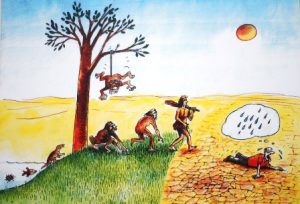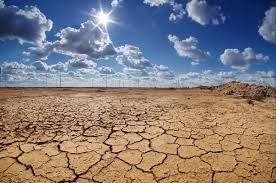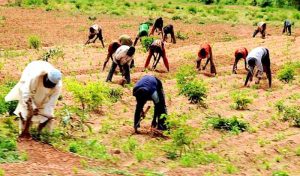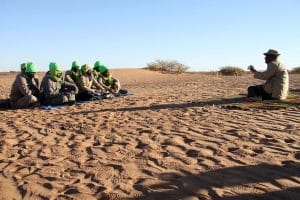It’s World Day to Combat Desertification and Drought! Every 17th day of June, the world over comes together to promote public awareness relating to international cooperation to combat desertification and the effects of drought.
Out of concern that “desertification and drought are problems of global dimension in that they affect all regions of the world,” the international community adopted the Convention to Combat Desertification (UNCCD) in Paris on 17 June 1994.

This year’s 2019WDCD will be celebrated under the theme of 25 years of implementation of the Convention and beyond, focusing on the path the Convention has taken, and the future the Convention could bring.
The slogan is Let’s grow the future together.
Ok now that we know about the day, let’s talk about desertification itself.
Desertification is not the expansion of existing deserts, which will be desert encroachment. Instead, it is the degradation of fertile land which is not restricted to only front-line states (states bordering the Sahara). This simply mean that desertification is the loss of vegetation and wildlife due to climate change or human activity.
Let’s understand that land degradation is a serious problem everywhere on our planet that needs to be addressed accordingly.
Causes of Desertification
- Overgrazing: Animal grazing is a huge problem. If there are too many animals that are overgrazing in certain spots, it makes it difficult for the plants to grow back, which hurts the biome and makes it lose its former green glory.
- Deforestation: Cutting down of trees for wood, fuel or to build houses contributes to the problems related to desertification. Without plants and trees around; animals lose their homes, the soil is exposed to the heat which eventually causes it to dry out and .
- Farming Practices: Some farmers do not know how to use the land effectively. They may essentially strip the land of everything that it has before moving on to another plot of land. By stripping the soil of its nutrients, desertification becomes more and more of a reality for the area that is being used for farming.
- Urbanization and Development. As mentioned above, development can cause people to go through and kill the plant life. It can also cause issues with the soil due to chemicals and other things that may harm the ground. As areas become more urbanized, there are less places for plants to grow, thus causing desertification.
- Climate Change: Climate change plays a huge role in desertification. As the days get warmer and periods of drought become more frequent, desertification becomes more and more eminent. Unless climate change is slowed down, huge areas of land will become desert; some of those areas may even become uninhabitable as time goes on.
- Stripping the land of resources. If an area of land has natural resources like natural gas, oil, or minerals, people will come in and mine it or take it out. This usually strips the soil of nutrients, which in turn kills the plant life, which in turn starts the process toward becoming a desert as time goes on.
- Natural Disasters: There are some cases where the land gets damaged because of natural disasters, including drought. In those cases, there isn’t a lot that people can do except work to try and help rehabilitate the land after it has already been damaged by nature.

Effects of Desertification
- Farming becomes next to impossible. If an area becomes a desert, then it’s almost impossible to grow substantial crops there without special technologies. This can cost a lot of money to try and do, so many farmers will have to sell their land and leave the desert areas.
- Hunger: Without farms in these areas, the food that those farms produce will become much scarcer, and the people who live in those local areas will be a lot more likely to try and deal with hunger problems. Animals will also go hungry, which will cause even more of a food shortage.
- Flooding: Without the plant life in an area, flooding is a lot more eminent. Not all deserts are dry; those that are wet could experience a lot of flooding because there is nothing to stop the water from gathering and going all over the place. Flooding can also negatively affect the water supply, which we will discuss next.
- Overpopulation and Migration: When areas start to become desert, animals and people will go to other areas where they can actually thrive. This causes crowding and overpopulation, which will, in the long run, end up continuing the cycle of desertification that started this whole thing anyway.
- Poverty: Without food and water, it becomes harder for people to thrive, and they take a lot of time to try and get the things that they need.
Solutions for Desertification
- Policy Changes Related to How People can Farm. Encouraging sustainable farming practices and land management activities will go a long way.

- Education: By educating people on sustainable farming practices, more land will be saved from becoming desert.
- Policy Changes to Other Types of Land Use. If people are using land to get natural resources or they are developing it for people to live on, then the policies that govern them should be ones that will help the land to thrive instead of allowing them to harm the land further.
- Technology Advances. In some cases, it’s difficult to try and prevent desertification from happening. In those cases, there needs to be research and advancements in technology that push the limits of what we currently know.
At FADE Africa, we are committed to the fight against desertification and desert encroachment because Land is Life SDG 15. You can read about our work on desertification and desert encroachment here . Also, https://fadeafrica.org/our-work/ .
